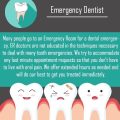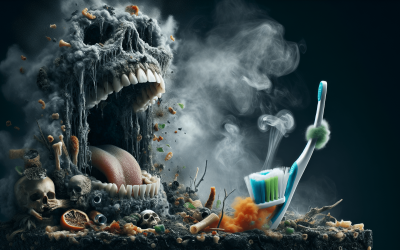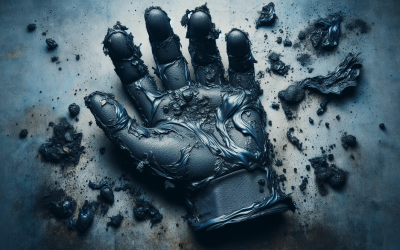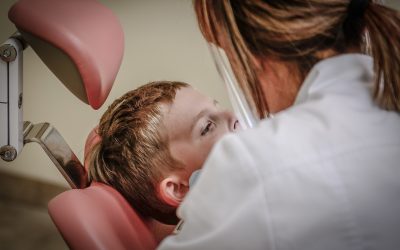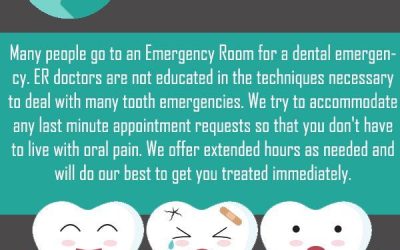So, you’re going about your day, enjoying a delicious meal or maybe just having a casual conversation, when suddenly, you feel a strange sensation in your mouth. It’s foreign, uncomfortable, and it’s definitely not supposed to be there. That’s right, we’re talking about those pesky foreign objects that somehow find their way into your teeth or gums. Whether it’s a piece of food, a stubborn popcorn kernel, or even a tiny fragment of a broken tooth, dealing with a foreign object in your mouth can be quite a nuisance. In this article, we’ll explore the various types of foreign objects that can get stuck in your teeth or gums, the potential risks they pose, and what you can do to alleviate the discomfort.
Causes
Foreign objects in teeth or gums can occur due to various reasons. Let’s take a look at some common causes:
Accidental ingestion or insertion
Accidental ingestion or insertion of foreign objects can happen when you eat or drink something that contains small particles or fragments. It can also occur when you accidentally bite into something hard and a piece gets lodged in your teeth or gums.
Dental procedures
Foreign objects in teeth or gums can also be a result of dental procedures. Sometimes, fragments of teeth or dental materials such as fillings or crowns can accidentally break off and get stuck in the oral cavity.
Trauma or injury
Trauma or injury to the mouth can lead to foreign objects becoming lodged in teeth or gums. This can happen during accidents or sports-related injuries, where objects from outside the body may become embedded in the oral tissues.
Symptoms
When a foreign object gets stuck in your teeth or gums, it can cause various symptoms. Here are some signs to look out for:
Discomfort or pain
One of the most common symptoms of a foreign object in teeth or gums is discomfort or pain. You may experience a dull ache or sharp pain depending on the location and size of the object.
Swelling or inflammation
If a foreign object irritates the tissues in your mouth, it can lead to swelling or inflammation. This can result in redness and tenderness around the affected area.
Bleeding or oozing
In some cases, a foreign object may cause bleeding or oozing from the gums. This can occur if the object irritates the gum tissues or causes an injury.
Difficulty in chewing or speaking
When a foreign object gets lodged in your teeth or gums, it can make it challenging to chew or speak properly. You may feel uncomfortable or even experience pain while trying to eat or talk.
Visible object in teeth or gums
Sometimes, you may be able to see the foreign object in your teeth or gums. It could be a small particle of food, a broken tooth fragment, or even a dental material such as a filling or crown.
Types of Foreign Objects
Foreign objects in teeth or gums can vary in nature. Let’s take a look at some common types:
Food particles
Food particles are a common type of foreign object that can get lodged in teeth or gums. They can be small and hard to remove without proper dental intervention.
Tooth fragments
When a tooth chips, cracks, or breaks, fragments of the tooth can become lodged in your teeth or gums. These tooth fragments can cause discomfort and may require professional extraction.
Dental materials
Dental materials such as fillings, crowns, or even orthodontic wires can become dislodged and get stuck in your teeth or gums. These objects may require professional removal to prevent further complications.
Foreign objects from accidents or injuries
Accidents or injuries can introduce foreign objects into the oral cavity. This can include objects like shards of glass, splinters, or other debris that can become lodged in the teeth or gums.
Complications
When a foreign object remains stuck in your teeth or gums, it can lead to various complications. Here are some potential issues that can arise:
Infection
An object lodged in your teeth or gums can create a breeding ground for bacteria, leading to an increased risk of infection. The presence of a foreign object can make it difficult to clean the affected area properly, further increasing the chances of infection.
Gum disease
Foreign objects can irritate the gums, leading to inflammation and the development of gum disease. If left untreated, gum disease can progress and cause further damage to the surrounding tissues and teeth.
Abscess formation
In some cases, a foreign object may cause an infection to develop within the gums or surrounding tissues. This can result in the formation of an abscess, which can be painful and require immediate dental attention.
Tooth decay or damage
If a foreign object remains in contact with a tooth for an extended period, it can lead to tooth decay or damage. The presence of the object can create a breeding ground for bacteria and compromise the structural integrity of the tooth.
Speech or eating difficulties
Depending on the location and size of the foreign object, it can interfere with your ability to speak or eat comfortably. This can impact your daily life and overall well-being.
Diagnosis
If you suspect a foreign object is stuck in your teeth or gums, a dental professional can perform a thorough diagnosis to confirm the presence of the object. Here are some common diagnostic methods:
Oral examination
Your dentist will visually inspect your teeth and gums to identify any visible foreign objects or signs of irritation or inflammation.
X-ray or CT scan
In some cases, an X-ray or CT scan may be necessary to get a clear view of the affected area. These imaging techniques can help identify the presence and location of the foreign object.
Intraoral camera
An intraoral camera is a small, handheld device that allows your dentist to capture images of your oral cavity. This can be useful in identifying and documenting the presence of a foreign object.
Digital dental models
Digital dental models or impressions can be taken to create a detailed replica of your teeth and gums. This can help your dentist plan the best course of treatment for removing the foreign object.
Treatment
Treatment for a foreign object in your teeth or gums will depend on the type of object, its location, and any associated complications. Here are some common treatment approaches:
Removal using dental instruments
In many cases, a dental professional can remove the foreign object using specialized dental instruments. They will carefully maneuver the object out of your teeth or gums to alleviate discomfort and prevent further complications.
Surgical extraction if necessary
If the object is deeply embedded or if there are complications such as an abscess, surgical extraction may be required. Your dentist will numb the area with local anesthetic before performing the extraction procedure.
Antibiotics for infection
If an infection is present or likely, your dentist may prescribe antibiotics to help eliminate the bacteria and prevent the infection from spreading. It’s essential to take the prescribed antibiotics as directed to ensure effective treatment.
Pain medications
To manage any pain or discomfort associated with the foreign object, your dentist may recommend over-the-counter pain medications or prescribe stronger pain relief if necessary.
Follow-up care
After the removal of the foreign object, your dentist may schedule a follow-up appointment to monitor your progress and ensure proper healing. They may also provide further instructions on oral hygiene and preventive measures.
Prevention
Taking preventive measures can help reduce the risk of foreign objects becoming lodged in your teeth or gums. Here are some tips to consider:
Eating slowly and cautiously
When eating, be mindful of what you consume and chew your food slowly and carefully. Avoid biting into hard objects or eating foods that have a tendency to leave small particles behind.
Avoiding chewing on hard objects
To prevent the risk of tooth fractures or foreign objects, refrain from using your teeth as tools. This means avoiding habits like biting your nails, opening packaging with your teeth, or chewing on pens or pencils.
Regular dental check-ups
Scheduling regular dental check-ups allows your dentist to identify potential issues early on and address them before they become more significant problems. Your dentist can also conduct professional cleanings to remove any buildup that can contribute to the formation of foreign objects.
Proper oral hygiene
Maintaining good oral hygiene is crucial for preventing various dental problems, including the formation of foreign objects. Brush your teeth at least twice a day, floss daily, and use mouthwash as recommended by your dentist.
Home Remedies
Although home remedies may not be a substitute for professional dental care, they can provide temporary relief. Here are some home remedies you can try:
Using gentle flossing techniques
If you can see or feel a foreign object between your teeth, you can try using gentle flossing techniques to dislodge it. Be cautious not to push the object further into the gums or cause any injury.
Rinsing with warm saltwater
Gargling with warm saltwater can help reduce inflammation and promote healing. Mix a teaspoon of salt in a glass of warm water and rinse your mouth thoroughly.
Avoiding further trauma or injury to the area
To prevent exacerbating the situation, avoid further trauma or injury to the affected area. Be careful when brushing your teeth, eating, or participating in activities that could potentially dislodge or push the foreign object deeper.
When to See a Dentist
While some foreign objects in teeth or gums may dislodge on their own or with minor intervention, there are situations where professional dental care is necessary. Here are signs that indicate it’s time to see a dentist:
Persistent pain or discomfort
If you’ve been experiencing continuous pain or discomfort, it’s essential to have a dental professional evaluate the situation. Persistent symptoms may indicate a more significant issue that requires treatment.
Swelling or redness that worsens
If the swelling or redness around the affected area worsens or spreads, it could be a sign of infection. Prompt treatment is necessary to prevent further complications.
Fever or signs of infection
The presence of a fever or other signs of infection, such as increased warmth, pus, or an unpleasant taste in your mouth, requires immediate dental attention. These symptoms may suggest an abscess or severe infection.
Difficulty eating or speaking
If the foreign object is causing significant difficulties in eating or speaking, it’s crucial to seek professional care as soon as possible. Your dentist can alleviate your symptoms and recommend appropriate treatment.
Conclusion
Foreign objects in teeth or gums can cause discomfort and potential complications if left untreated. It’s important to seek prompt diagnosis and treatment to prevent further issues from arising. By maintaining good oral hygiene, visiting the dentist regularly, and following preventive measures, you can help reduce the risk of foreign objects becoming lodged in your teeth or gums. Remember to listen to your body and seek professional dental care if you experience persistent symptoms or any signs of infection or injury. By taking care of your oral health, you can ensure your teeth and gums remain healthy and free from foreign objects.


